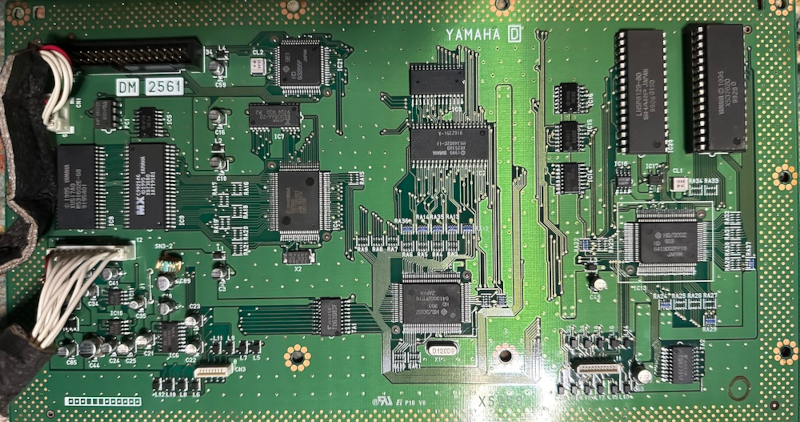You might have had a boombox back in the 1990s, but probably not like the Yamaha MDP-10. As [Nicole] explains, the odd little device played MIDI files from a floppy disk. Technically, it wasn’t truly a boombox because it lacked batteries, but it sure looks like one.
The box also had a MIDI input jack, but no output. For an antique gadget, it is pretty impressive, but maybe not much by today’s standards. Of course, what we really wanted to see was what was inside. [Nicole] doesn’t disappoint.
The boombox brains are a pair of Hitachi H8 3000-series CPUs. The boards actually looks surprisingly modern until you notice the lack of integration. There are separate ROMs, RAMs, a floppy drive controller, and, of course, MIDI chips. Apparently, opening the box up is a challenge so [Nicole] suggests not doing it unless necessary. We assume it went back together with no problems.
There are lots of tidbits about peculiarities in the device. There are also, of course, recordings of the output and some comparisons from other devices. A great look into an old and odd piece of gear.
Since it has an input jack, you could connect it to — oh, we don’t know — maybe some spoons? Or a hurdy-gurdy.

















Sounds like the Roland MT80. SC-55 was the rack version and sadly, mine recently died.
Sorry for your loss :(
It does sound more like a Roland SD-35. That thing took floppies and it actually did *sound* like a SC-55 because it got the same synth inside. :D (If I remember correctly)
Never mind, I caught the dumb today. MT80 … never mind
there are USB upgrades for Yamaha MDP10/30 devices (including their MIDI pianos)
Back when I had a Gravis Ultrasound, in the time before MP3’s, I enjoyed playing a midi file of the Goldberg Variations using a detailed sampled Bosendorfer piano midi file thingy.
Heading down to the B-ball court to blast some Castlevania
Look for the Famicom Disk System version, it had an extra sound channel so the compositions have more polyphony available. Oddly thr music is an improvement but the sfx I prefer the NES versions.
There is a niche market for floppy workarounds. A knitting machine or an organ preset-performance memory where expensive legacy hardware must keep working are cases. I’ve seen one and oddly it has a 3 digit LED and a USB socket in the floppy disc form factor, a button lets you select by number. It can access at least 99 “discs” that you make on a thumb drive first as well as interact with the host’s OS on a given “disk”.
I also have a Baldwin piano MIDI player box floppy and with cutting edge 2 way UHF remote with dial and song title display on the remote. DIN in and out.
No, they couldn’t have used MP3 in 96. Not for a few more years. Nothing could decode it in hardware yet, certainly not as cheaply as MIDI, which is why it plays MIDI…
Reminds me Roland’s MT-300S
Those were called “portable” radios back in the day. They had all sorts of portable devices, like TVs and so on. All these were made to be carried around and often had handles, but they still needed mains power.
Most of them, at least from the 1980s on, also accepted large numbers of D-cells, although most of them would bankrupt you if operated for long at max volume.
If modifying them, it’s often easy to put a LFP “gel cel” form-factor battery inside (often there is a great deal of void space, and LFP batteries are quite light). This can give you MUCH longer runtimes, as well as freeing up the former battery compartment for anything your imagination might create, where external-access is convenient. Given that most of them used eitehr six or nine D-cells, you often have LOTS of room to play with.